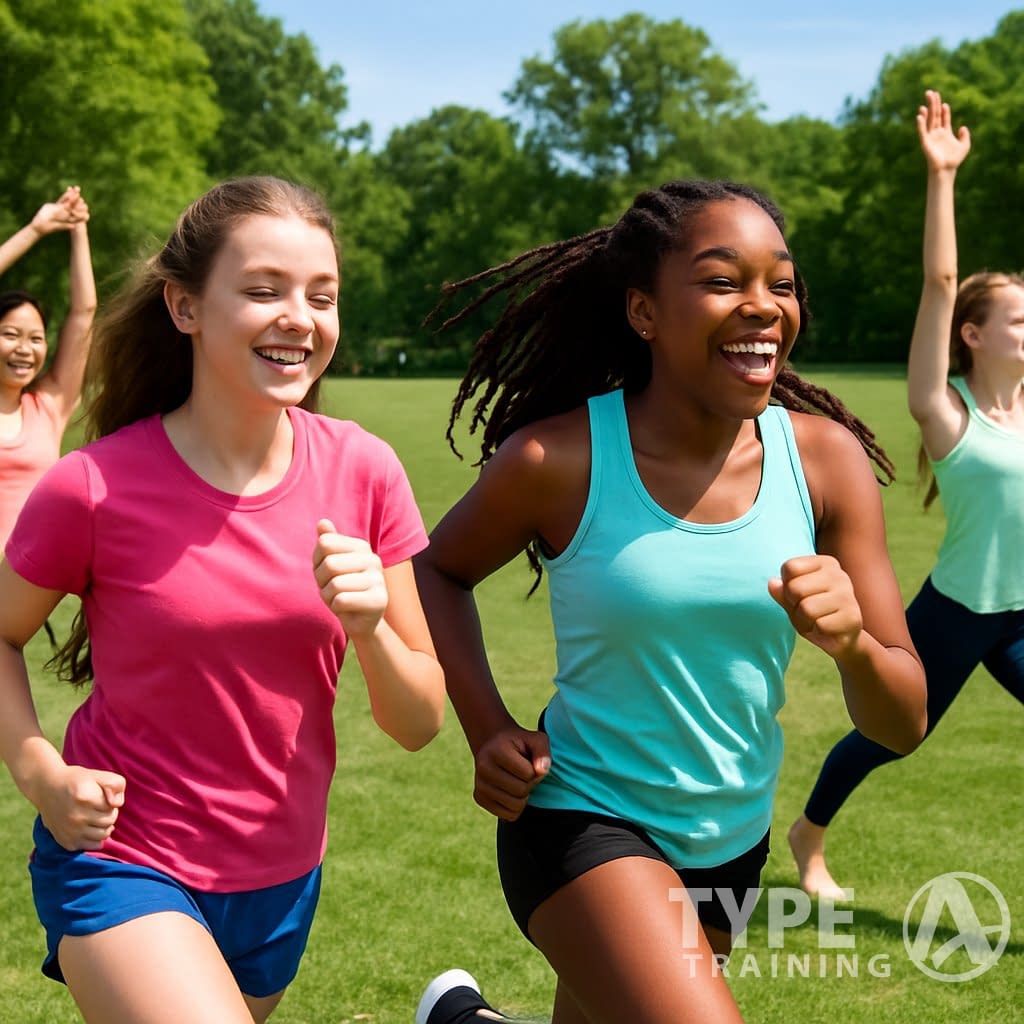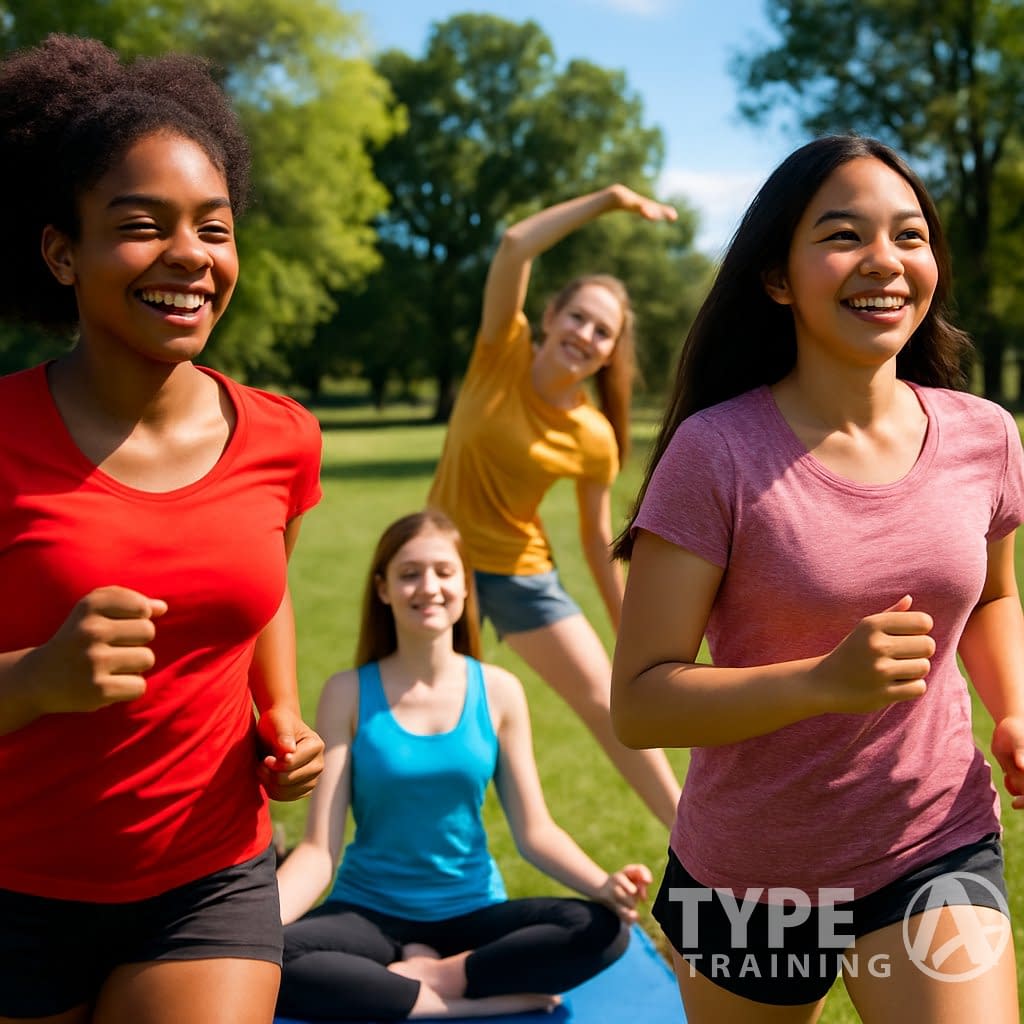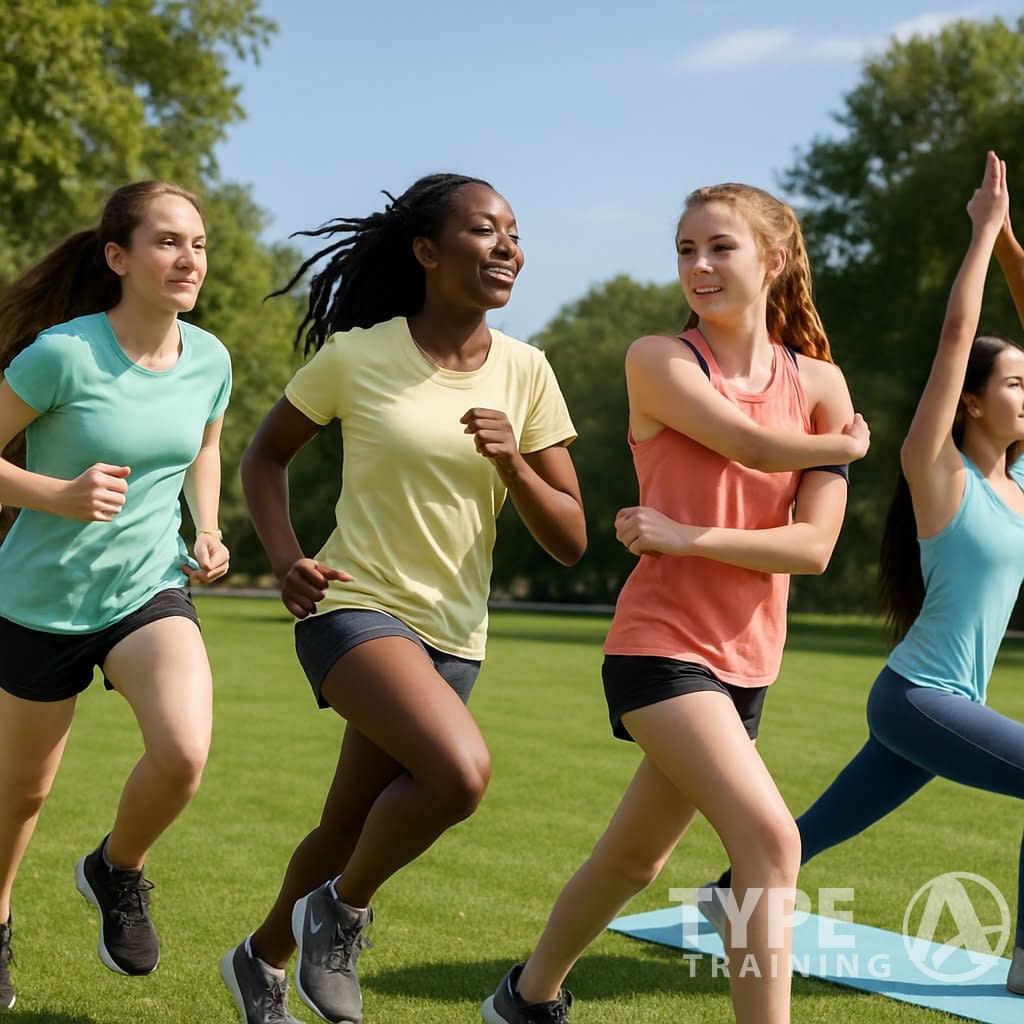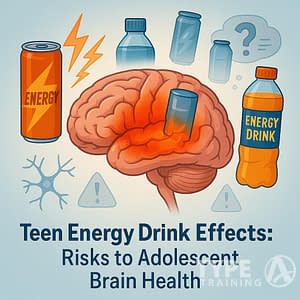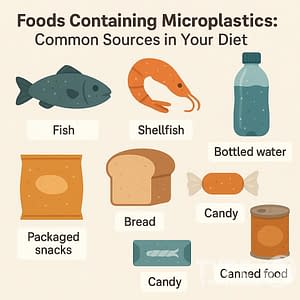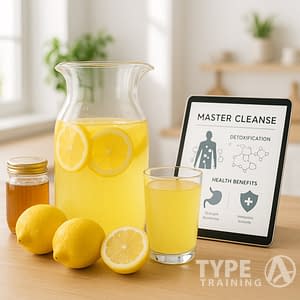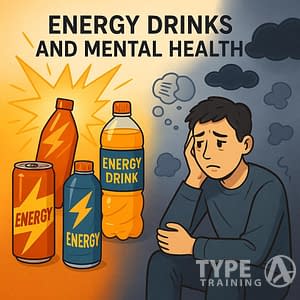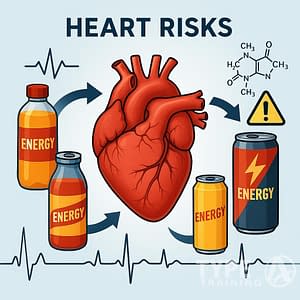Being active can transform your life as a teenage girl. Regular teen girls exercise benefits include making your body stronger, helping you sleep better, and lifting your mood.
It’s not just about sports at school—movement can be anything from dancing to hiking or just walking with friends. The teen girls exercise benefits extend beyond physical fitness, improving mental health while offering many enjoyable ways to get moving that don’t feel like a chore.
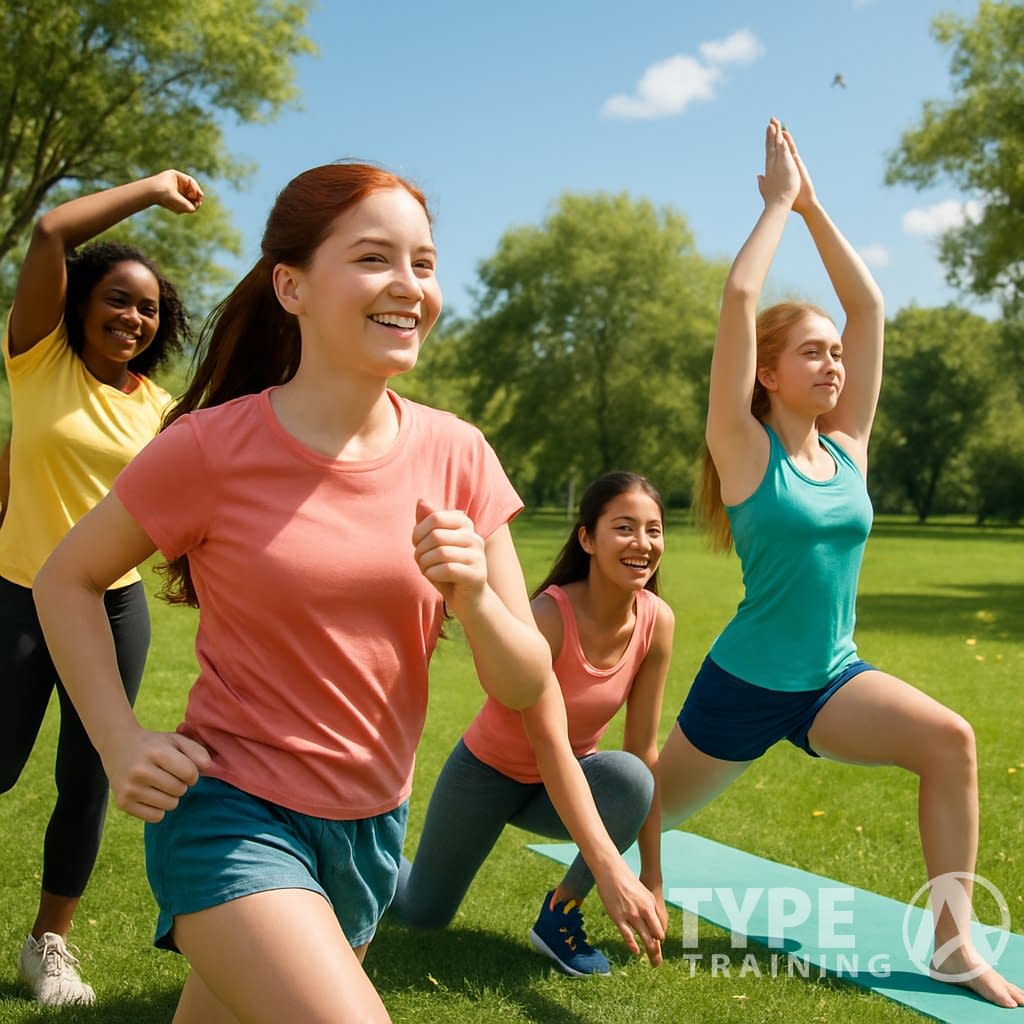
Exercise helps you concentrate in class and supports your memory. You’ll probably notice you have more energy during the day, too.
Popular posts:
Moving your body isn’t just about fitness—it also helps your mind feel less stressed and more confident. These habits can stick with you and set you up for a healthier future.
Key Takeaways
- Exercise boosts your physical and mental health.
- Staying active helps with growth and self-confidence.
- There are many ways to add movement to your daily life.
Overview of Movement and Exercise for Teenage Girls
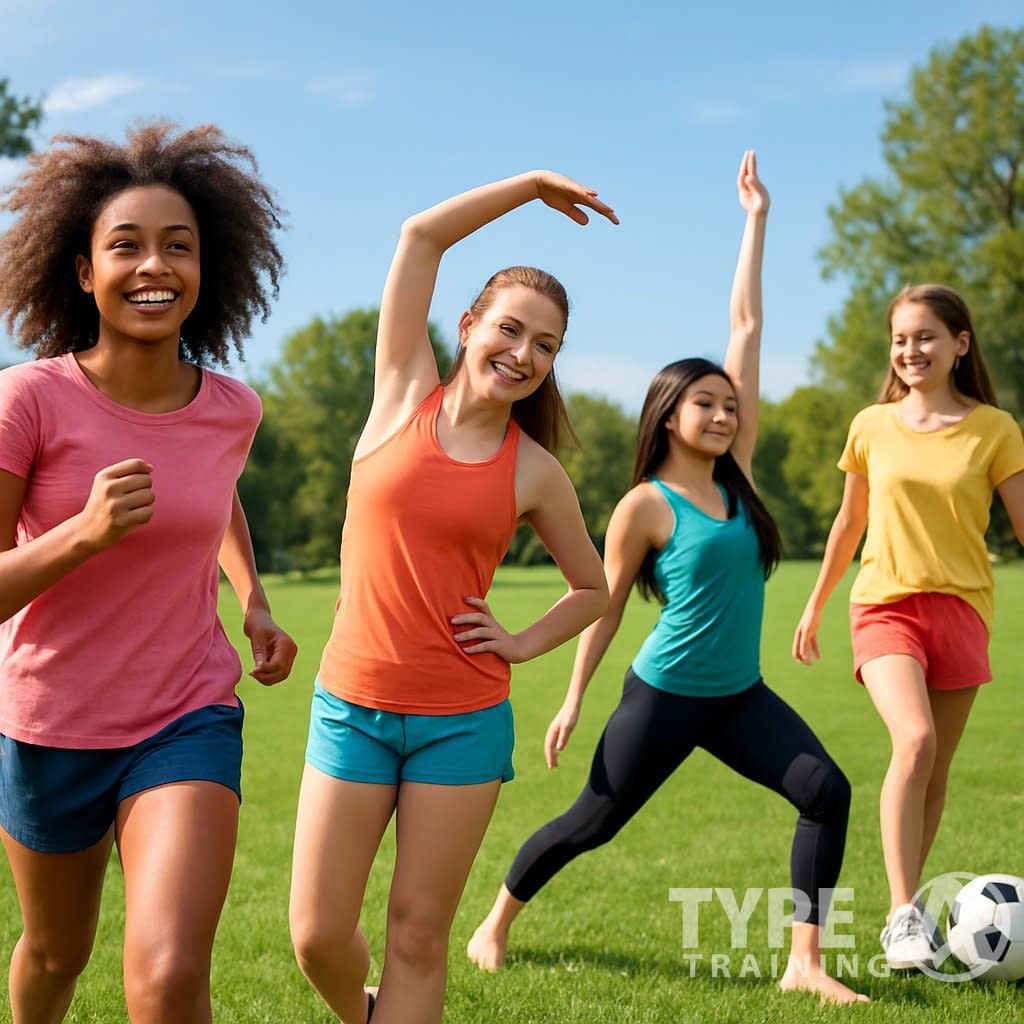
Being physically active as a teenage girl improves your mental and physical health. There’s more to it than just running around—understanding what counts as movement, how much you need, and the difference between everyday activity and a workout plan helps you get the most out of it.
Defining Physical Activity and Exercise
Physical activity is any movement that uses your muscles and burns calories. Walking to school, climbing stairs, or cleaning your room all count.
Exercise is a type of physical activity that’s planned and repetitive—like running, swimming, or a dance class. Both are good for you, but exercise usually has a goal, like building strength or flexibility.
Physical activity can happen any time, while exercise tends to follow a routine. Both have their perks, honestly.
Key benefits of being physically active:
- Stronger muscles and bones
- Better mood and energy
- Healthier weight control
Staying active also lowers stress and can help you feel better about your body.
Recommended Activity Levels for Adolescents
Experts say teens should get at least 60 minutes of moderate to vigorous physical activity each day. That means getting your heart pumping for most of that time.
Some things you can try:
- Brisk walking
- Running
- Riding a bike
- Playing sports
Mix up heart-pumping activities with muscle and bone-strengthening ones, like push-ups or jumping. You don’t have to do it all at once—break it up throughout the day if that’s easier.
Daily movement is shown to help improve sleep, manage stress, and boost your mood.
Differences Between Everyday Movement and Structured Exercise
Everyday movement is stuff like walking the dog, sweeping, or climbing stairs. It’s part of your routine, and you might not even notice you’re being active.
Structured exercise is planned out—maybe you follow an exercise plan made for teens or go to a fitness class. Both types are valuable, but structured exercise lets you set goals and track progress.
Everyday movement adds up and keeps you from sitting too much. Honestly, combining both is probably the sweet spot.
Physical Health Benefits
Regular exercise and movement improve heart health, help you keep a healthy weight, and make your bones and muscles stronger. Your immune system gets a boost, too.
There are plenty of activities you can do as a teen that deliver these benefits, and they’ll impact your everyday health and even your future.
Cardiovascular Health and Disease Prevention
Physical activity protects your heart and blood vessels. Activities like jogging, swimming, or cycling make your heart stronger and more efficient.
Regular exercise lowers your risk of heart disease, stroke, high
Moving every day can also improve cholesterol and blood flow, keeping your arteries in better shape. Aerobic activities—like brisk walking or team sports—are especially good for your heart and lungs.
Even simple daily movement adds up. For more info, check out this resource on physical fitness for teens.
Maintaining a Healthy Weight
Staying active burns calories and keeps your energy balanced. That makes it easier to maintain a healthy weight and avoid problems like obesity and diabetes.
When you exercise, your muscles use energy, so extra calories aren’t stored as fat. Being overweight as a teen can raise your risk for health issues down the line.
Daily movement helps you avoid weight-related problems as you get older. It also improves muscle tone and posture, which makes everyday stuff easier.
Your confidence might grow as your body gets stronger. Physical activity is key for controlling your weight and building healthy habits. You can read more at this CDC page about physical activity for children.
Bone and Muscle Strengthening
Strong bones and muscles help you avoid injuries and keep up with busy days. Teens especially need bone-strengthening activities since most bone growth happens now.
Jumping, running, dance, or resistance exercises make your bones denser and lower your risk for fractures and osteoporosis later. Muscle-strengthening moves—like squats, push-ups, or climbing—help you build strength and keep your body aligned.
Regular strength training improves balance and posture. A mix of aerobic and resistance exercises gives your body what it needs to grow strong. For more on this, check out this guide on physical activity and growth.
Boosting the Immune System
Exercise supports your body’s ability to fight off illness. Movement increases circulation, so immune cells get where they need to go faster.
Active teens usually get sick less often and recover quicker. Good sleep is important for your immune system, and regular activity actually helps you sleep better—especially for girls in their teenage years.
Keeping your immune system strong means you can focus more on school, sports, and hanging out with friends. Even simple things like walking, biking, or joining a sport can make a difference. There’s more on this at this article on the benefits of exercise for teenage girls.
Mental and Emotional Benefits
Exercise can help you think more clearly and feel happier. It’s also a solid way to deal with stress.
Physical activity supports healthy emotional development and helps you handle daily challenges a bit more easily.
Reducing Stress and Anxiety
Moving your body helps your brain release endorphins—those are natural mood lifters. They can lower your feelings of stress and anxiety.
Exercise has been shown to decrease negative thinking and worry. If you’re feeling tense, even a short walk, dance break, or bike ride can help you chill out.
Physical activity can also ease period cramps or other discomfort during puberty, which might make life a little more comfortable. More on that at quality of life.
Quick Tips
- Go outside for fresh air and a brisk walk.
- Try a group activity like soccer or volleyball.
- Stretch gently before bed.
Improving Mood and Self-Esteem
Being active helps you feel better about yourself. Exercise can boost your confidence as you reach goals, whether that’s running farther or just sticking with it.
During activity, your body releases hormones that lift your mood. Teens who work out regularly often feel less sad and have fewer mood swings.
You might notice better self-esteem and a stronger sense of independence as you challenge yourself. Physical activity encourages hanging out with others, which can help prevent loneliness.
Small wins—like learning a new yoga pose or finishing a tough workout—can really boost your self-image. For more, see the physical and mental benefits of exercise for teens.
Supporting Cognitive Function
Exercise can improve your ability to focus, remember things, and solve problems. Being active increases blood flow to the brain, which supports healthy brain growth during your teen years.
Aerobic activities like running, swimming, or dancing can help you do better in school—improving attention and memory. Studies say teens who exercise regularly are more alert and can switch between tasks more easily (that’s called cognitive flexibility).
Regular movement is linked to fewer mental health challenges and might even lower your risk of depression. Trying new sports or activities helps your brain form new connections, keeping your mind sharp. There’s more on this at brain health and learning.
Supporting Growth and Development
Regular movement and exercise matter a lot for your body’s growth and picking up new skills. Staying active as a teenager can set you up for healthier habits later on.
Physical Growth During Adolescence
Your body changes in so many ways during your teenage years. Physical activity supports healthy muscle and bone development by making your body work a bit harder, which helps your bones grow stronger.
Exercise boosts your heart and lung health. It keeps blood moving, increases lung capacity, and can help with
Being active daily helps your body grow in a more balanced way. Walking, cycling, or playing sports gives your body what it needs to develop. If you’re curious, here’s more on how physical activity benefits your growth and development.
Motor Skills and Coordination
Moving your body helps you pick up skills like balance and quick footwork. Trying different things—dancing, swimming, or team sports—teaches your muscles to work together better.
Better motor skills make everyday stuff easier and safer. You react faster, move more smoothly, and cut down on injuries by building coordination.
This helps in PE, sports, and even with things like running or carrying groceries. As you get more skilled, you’ll probably feel more confident trying new activities too.
Building Lifelong Healthy Habits
Getting into the routine of daily exercise as a teen really does make it easier to stick with as an adult. Once you’re used to moving, it just feels normal.
Active teens often say they’re in better moods, have more energy, and sleep better. Moving your body is a proven way to manage stress and support your mental health. According to Nuffield Health, teens who move more usually sleep better at night.
Trying out different activities, setting small goals, or making movement social can help you keep at it as you get older.
Types of Physical Activities for Teenage Girls
There are so many ways to stay active and support your health. Each type of activity targets different parts of your body and brings its own perks.
Aerobic Activities
Aerobic activities work your heart, lungs, and boost endurance. Things like brisk walking, running, swimming, and dancing are all solid options.
Sports like soccer, basketball, and biking are fun and social. If you like solo activities, jogging or cross-country skiing (when you can) are great too.
Quick activities like jumping rope or active games count as well. Experts suggest aiming for at least 60 minutes of moderate or vigorous-intensity aerobic activity most days. Regular movement supports your heart and can boost your mood, too. Here’s a list of aerobic activities for teens if you need ideas.
Muscle and Bone Strengthening Activities
Strong muscles and bones help you avoid injuries and support your body’s changes. Simple bodyweight moves like pushups, squats, and lunges really work.
Fun stuff like martial arts, climbing, or joining a sports team builds strength too. Sports with jumping and running, like volleyball or basketball, help your bones.
You don’t need a gym. Resistance bands, carrying groceries, or playing games that use your own body weight can all help. These activities matter for health, posture, and energy. Find more on strength and bone activities here.
Flexibility and Balance Exercises
Flexibility and balance activities help you avoid injuries and move more freely. Yoga and stretching routines can increase your range of motion and help you relax.
Dance classes, gymnastics, and some martial arts (like karate or judo) are also good for balance. Even just balancing on one foot or trying poses on a soft surface can help.
Adding stretching before and after workouts can prevent soreness and help you recover. Good balance and flexibility support your sports performance and make daily movement safer as your body changes.
Improving Sports Performance
Regular movement and exercise help you get stronger, move better, and build skills for sports. These habits make it easier to push yourself and enjoy being part of a team.
Building Strength and Endurance
Strength training and aerobic activities are important for improving at sports. Running, swimming, or cycling help your body build stronger muscles and bones.
This can protect you from injuries when you’re playing or just hanging out with friends. Endurance exercises like jogging or soccer train your heart and lungs, so you can play longer without getting tired so fast.
Resistance moves—like bodyweight squats or using light weights—are great for building muscle.
- Better stamina for games and practice
- Faster recovery after activity
- Improved muscle and bone health
Even simple things, like climbing stairs or brisk walking, add up over time.
Enhancing Flexibility and Balance
Flexibility is key for moving through a full range of motion. Yoga, stretching, and dance keep your muscles and joints loose.
Good flexibility helps you reach, bend, and twist without discomfort. Balance is a big deal too. Gymnastics, soccer, using a balance board, or even just trying the yoga tree pose can help.
Better balance lowers your risk of falls and injuries.
- Stretch after workouts
- Try yoga classes
- Practice standing on one foot
If you want more on this, check out the benefits of movement and exercise for teenage girls.
Developing Coordination and Agility
Coordination is about how well you use your arms, legs, and eyes together. Sports like basketball, volleyball, and tennis need quick changes in direction and timing.
Agility means moving quickly and easily—dodging, sprinting, or changing direction. Drills like ladder runs, cone drills, or just playing catch help you build these skills.
- Play reaction games
- Jump rope in your workouts
- Join team sports that need quick moves
Better coordination and agility mean you can react faster and move more confidently. For more ideas, see the importance of physical fitness for teens.
Creating and Maintaining an Exercise Plan
Building a solid exercise plan helps you form healthy habits and feel your best. It’s worth thinking about your goals and finding ways to stay involved, even when life gets in the way.
Setting Realistic Goals
Start by figuring out what you want—maybe it’s building strength, keeping a healthy weight, or just feeling better. Use the SMART method for goal setting:
- Specific: “I want to jog for 20 minutes, three times a week.”
- Measurable: Track your progress in a journal or fitness app.
- Achievable: Pick activities that fit your ability and schedule.
- Relevant: Make sure the goal actually matters to you.
- Time-bound: Set a deadline, like one month, to hit your target.
Being realistic keeps you from getting frustrated and makes it easier to keep at it. Try mixing up activities—cycling, jogging, dancing—so your routine doesn’t get boring. Getting 60 minutes of regular exercise most days is a good aim for teens.
Staying Motivated and Overcoming Barriers
Staying motivated can honestly be a challenge, especially when you’re juggling school, friends, or family stuff. Sometimes, finding an exercise buddy or signing up for school activities makes moving around feel a lot less like a chore and way more like something to look forward to.
Try making exercise a regular thing by slotting it into your day—maybe right after homework, or whenever you usually have a little downtime.
Here are some common barriers and a few ideas for dealing with them:
| Barrier | Solution |
|---|---|
| Lack of time | Break into short sessions |
| Low energy | Choose activities you enjoy |
| Not feeling confident | Start with simple exercises |
It helps to track your progress and celebrate small wins—even the tiny ones. If you skip a day, don’t stress about it; just pick things up again tomorrow.
And look, it’s worth remembering that exercise really does support your mental health and all those changes happening during your teen years. Every bit of movement counts, even if it doesn’t always feel like it.

